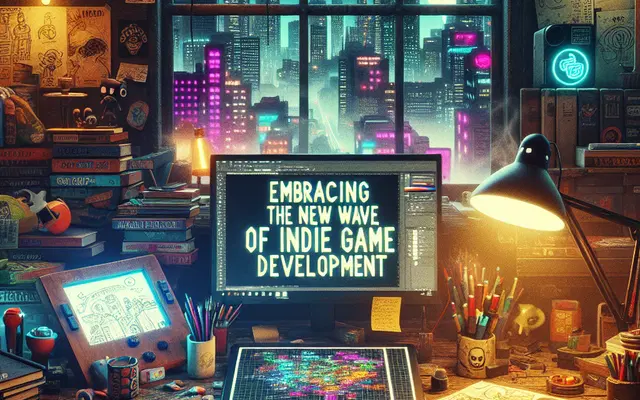Nurturing Creativity in Indie Game Development

Unleashing Innovation: Techniques for Creative Game Design
The indie gaming sector thrives on the originality and innovation of individual developers and small teams. These creatives often venture beyond the boundaries of conventional game design, exploring new storytelling techniques, art styles, and gameplay mechanics. By fostering an environment that encourages risk-taking and experimentation, indie developers can produce unique gaming experiences that captivate players. To unleash such innovation, developers can leverage tools like game jams and open-source platforms, allowing for rapid prototyping and collaborative feedback.
Anticipation is mounting in the indie game community as several highly-anticipated titles approach their release dates. These games shine a spotlight on the diverse talents permeating the indie scene, ranging from intricate puzzle platforms to immersive narrative-driven adventures. Indie developers have been pushing the envelope, teasing gamers with unique art directions and engaging mechanics. This upcoming wave of indie releases not only showcases the creativity of the designers but also sets a new bar for what can be expected from small-scale game production.
Building a community around indie game development is essential for nurturing creativity and shared innovation. Forums, social media groups, and indie game festivals play a significant role in bringing developers together, where they can exchange ideas, offer support, and challenge each other to think outside the box. Such communities also provide a nurturing ground for newcomers, offering mentorship opportunities and a platform to showcase their work. As a result, the indie game development community continues to grow robustly, enriched by the collective passion and creativity of its members.
Indie Scene Highlights: Anticipated Upcoming Game Releases
Indie game development has become a hotbed for creativity, where developers are often unshackled by the constraints of large studios. This freedom allows for unique and innovative game design that pushes boundaries and introduces new gaming experiences. Fans and players eagerly await the release of such games, as they promise to deliver fresh narratives, gameplay mechanics, and artistic styles. Keeping an eye on the indie scene is therefore essential for anyone looking for the next groundbreaking title that may redefine what games can be.
Among the most anticipated upcoming game releases, a few stand out for their bold approach to both storytelling and gameplay. These indie titles are not only highly awaited for their entertainment value but also for the potential they have to inspire and influence the broader gaming industry. They are examples of how a small team with a clear vision and passion can craft experiences that rivet players and create lasting impacts. These upcoming indie games are proof that creativity is thriving, and the indie scene is where much of today's gaming innovation is incubated.
Fostering a sense of community is another hallmark of indie game development. Social media and online platforms have become indispensable tools for indie developers to share their progress, exchange ideas, and solicit feedback from the gaming community. This interaction aids in refining the game even before its release and builds a relationship with potential players. The involvement of the community often leads to a deeper engagement with the final product, as players see their impact on the game's development. It's a symbiotic relationship that enriches both developers and gamers alike.
Fostering a Creative Community in Indie Game Development
Indie game development thrives in the soil of creativity, where small teams and individual developers craft unique experiences that often defy mainstream trends. The essence of fostering a creative community lies in the ability to nurture not just the games, but the people who create them. Supportive networks, knowledge sharing, and collaboration become the lifeblood of this ecosystem, providing indie developers with the resources and motivation they need to innovate and create boldly. Such a community can come together through online forums, local meetups, or game jams, forming the bedrock for sustained creative growth.
Game design is an art that benefits greatly from diverse perspectives and a willingness to experiment. Indie developers, unfettered by large-scale corporate constraints, have the freedom to explore novel mechanics and narrative styles. When a creative community embraces risk-taking and iteration, it cultivates an environment where groundbreaking gameplay can emerge. Encouraging the exchange of constructive feedback within this community can help refine these innovations, potentially leading to the next big indie game phenomenon.
Looking at the indie scene, it's clear that anticipation for upcoming game releases fuels the industry's momentum. When indie developers share their progress and tease future projects, it doesn't just generate hype—it also encourages fellow creators to strive for their own milestones. This cycle of anticipation and achievement is a testament to the vibrant community, showing that even without blockbuster budgets, indie games can captivate audiences and inspire developers worldwide to keep pushing the boundaries of game design.












